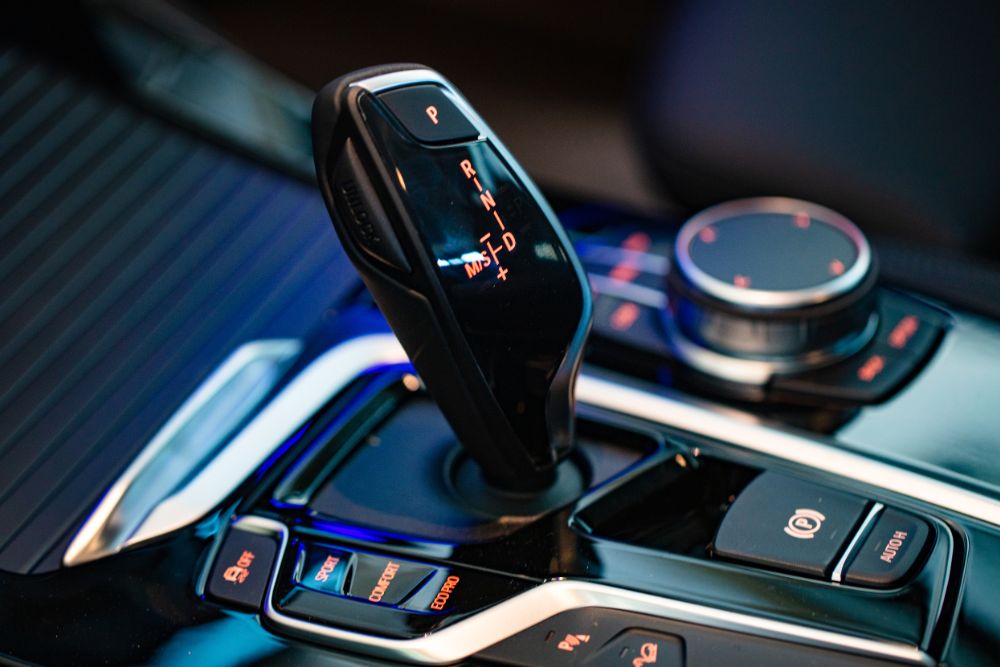
Your automatic transmission is one of the most complex and expensive components in your vehicle, yet many drivers unknowingly engage in habits that dramatically shorten its lifespan. Whether you’re driving a high-performance BMW M3 or a precision-engineered Porsche 911, understanding these transmission killers can save you from costly repairs and keep your vehicle performing at its peak.
1. Running Low on Transmission Fluid
Low transmission fluid levels are perhaps the most common yet devastating mistake drivers make. Your transmission fluid serves multiple critical functions – it lubricates moving parts, provides hydraulic pressure for gear changes, and carries heat away from internal components. When fluid levels drop, your transmission begins to overheat rapidly, causing metal components to expand and wear at an accelerated rate.
In performance vehicles like the Nissan GT-R or Mercedes AMG models, the consequences are even more severe. These high-output transmissions generate substantial heat under normal conditions, and insufficient fluid turns them into expensive time bombs. Regular fluid level checks, especially before spirited drives or track days, are essential for transmission longevity.
The damage from low fluid happens quickly and quietly. You might notice delayed gear engagement, slipping between gears, or unusual noises – but by then, internal damage has likely already begun. For dual-clutch transmissions found in many European performance cars, low fluid can cause clutch pack glazing and permanent damage within just a few hundred kilometres of driving.
2. Ignoring Overheating Warning Signs
Heat is the silent killer of automatic transmissions, particularly in Auckland’s varied driving conditions where stop-and-go traffic meets demanding hill climbs. When your transmission temperature exceeds safe operating limits, the fluid begins to break down chemically, losing its protective properties and turning from a lubricant into an abrasive substance.
Performance and exotic cars are especially vulnerable to overheating issues. Whether you’re piloting a Lamborghini through city traffic or pushing your tuned Mitsubishi Evo on a weekend drive, these vehicles generate tremendous heat that standard cooling systems struggle to dissipate. Warning signs include a burning smell, dark or discoloured transmission fluid, and the dreaded transmission temperature warning light.
Many drivers don’t realise that transmission overheating can occur even during normal driving conditions. Towing, aggressive driving, or simply being stuck in Auckland traffic on a hot day can push temperatures beyond safe limits. Once overheating damage occurs, it’s often irreversible – seals harden and crack, clutch materials glaze, and valve bodies warp, leading to complete transmission failure.
3. Using the Wrong Type of Transmission Fluid
Each automatic transmission is engineered to work with specific fluid formulations, and using the incorrect type is like putting diesel in a petrol engine – it simply won’t work properly. Modern transmissions, especially those in European performance vehicles, require precise fluid specifications that match their unique operating characteristics and tolerances.
The complexity increases significantly with advanced transmission types. PDK transmissions in Porsches, DSG units in Audis and Volkswagens, and DCT systems in BMWs all require manufacturer-specific fluids with exact viscosity ratings and additive packages. Using generic or incorrect fluid can cause immediate shifting problems and long-term damage to friction materials and hydraulic components.
Even seemingly minor specification differences matter enormously. A fluid that’s slightly too thick won’t flow properly when cold, causing wear during startup. Too thin, and it won’t maintain proper pressure at operating temperature. For high-performance vehicles where tolerances are measured in thousandths of millimetres, the wrong fluid choice can mean the difference between smooth operation and catastrophic failure.
4. Shifting Into Drive While Still Rolling Backwards
This common parking manoeuvre might seem harmless, but it delivers a shocking amount of stress to your transmission’s internal components. When you shift from reverse to drive while still moving backwards, the transmission must instantly reverse the rotation of multiple components, creating massive mechanical stress on gears, clutches, and bands.
In sophisticated transmissions like those found in McLarens or AMG Mercedes models, this practice is particularly damaging. These transmissions use complex planetary gear sets and multiple clutch packs that aren’t designed to handle such abrupt directional changes. The resulting shock load can cause immediate damage or create micro-fractures that lead to premature failure.
The damage compounds over time with each occurrence. What starts as minor wear on synchronisers and clutch plates eventually progresses to damaged gear teeth and failed bearings. For dual-clutch transmissions, this habit can cause clutch judder, rough engagement, and eventually complete clutch failure requiring expensive replacement.
5. Neglecting Regular Transmission Service
Modern automatic transmissions are marvels of engineering, but they’re not maintenance-free despite what some manufacturers claim. Skipping regular service intervals is essentially signing your transmission’s death warrant, especially in performance applications where components work under extreme conditions.
Transmission fluid degrades over time, accumulating contaminants, moisture, and wear particles that act like sandpaper on internal components. In high-performance vehicles that see spirited driving, this degradation happens even faster. Filter elements become clogged, restricting flow and causing pressure problems that lead to erratic shifting and component failure.
The false economy of skipping services becomes apparent when repair bills arrive. A proper transmission service for your Audi RS model or Toyota Supra might cost a few hundred dollars, but a replacement transmission runs into thousands. Regular servicing removes contaminants, replenishes additives, and allows technicians to spot developing problems before they become catastrophic failures.
Need Expert Transmission Service for Your Performance Car?
Your automatic transmission deserves the same attention and care as your engine, especially when it’s powering a high-performance or exotic vehicle. At Dodson, we specialise in premium transmission servicing for European, exotic, and performance cars throughout Auckland. Our experienced technicians understand the unique demands these sophisticated transmissions face and provide the expert care needed to keep them performing flawlessly. Contact our team today by calling 09 441 3635 to schedule your transmission service and protect your investment.

 Looking for Dual Clutch transmission components outside of New Zealand?
Looking for Dual Clutch transmission components outside of New Zealand?